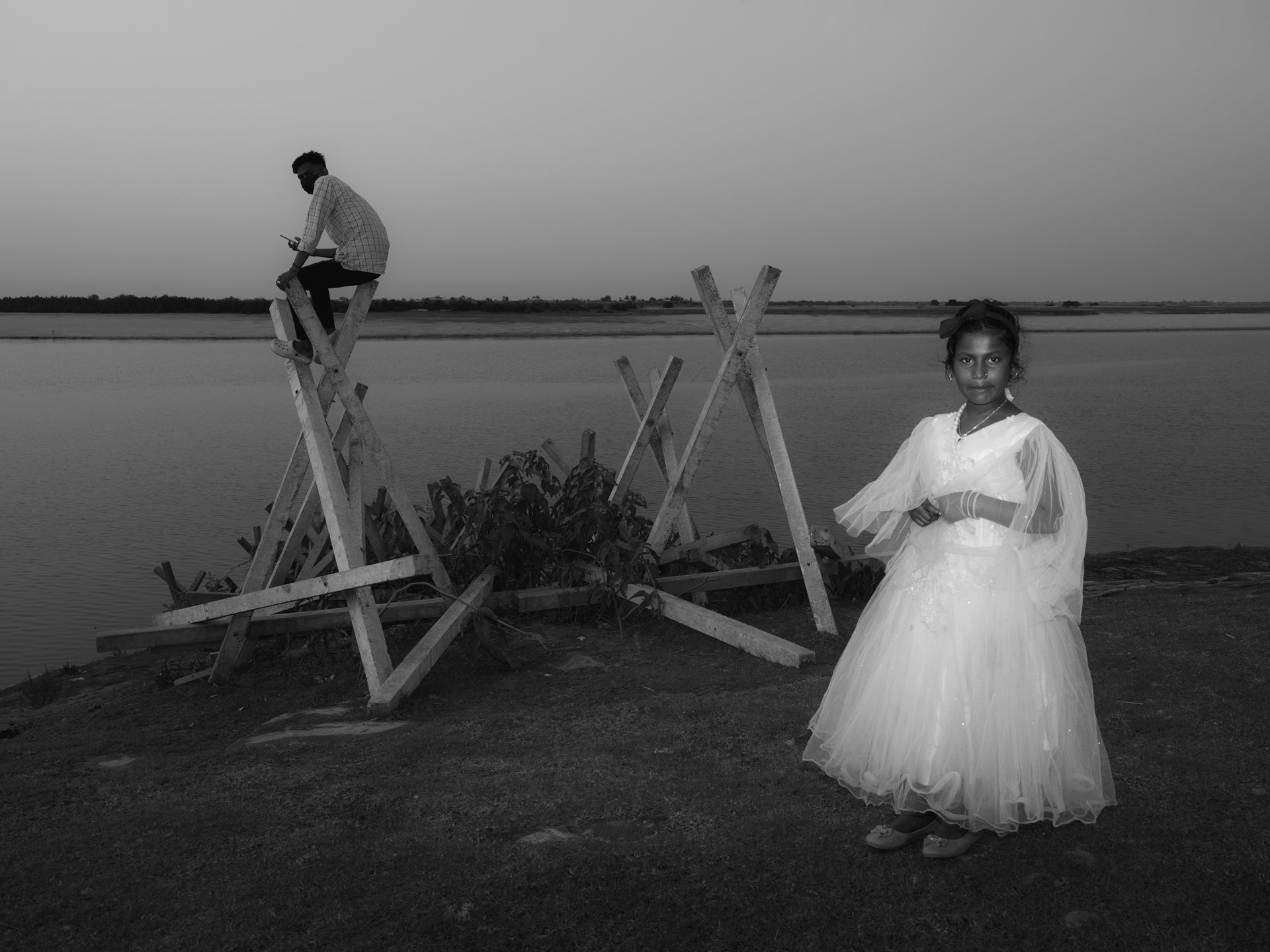A young Bengali Muslim boy attempts to secure a network signal for his cellphone atop a concrete "porcupine" while a girl celebrates Eid in her finest festive attire. The "porcupine" is a flood precaution introduced by the state’s Brahmaputra Board but failed to match the effectiveness of traditional methods used by Indigenous Assamese. In the eyes of local communities, the concrete structures have become a symbol of the incompetence and corruption of the board. Panikhaiti, Shontuli, Kamrup District, Lower Assam, India.
When Bangladesh declared independence in 1971, many Bengali Hindus and Muslims chose to migrate to the predominantly Hindu state of Assam, in northeastern India, to avoid future persecution in the uncertain and traumatic birth of Bangladesh, fuelling tensions at the border. Even Muslims who migrated prior to partition were labeled as "Bangladeshis," considered back then a derogatory term.
The National Register of Citizens (NRC), first compiled in 1951, is a list of all Indian citizens aimed at ostensibly addressing the influx of illegal migrants. However, the final draft published in 2019 excluded 19,06,657 individuals. Four years later, millions in Assam still live in a state of legal limbo, without official recognition by the state. Right-wing political parties in Assam have historically targeted the Bengali Muslim community to secure Hindu votes.
Compounding the plight of the Bengali Muslim community is Assam's unique topography and climate. The Brahmaputra River, revered yet destructive, causes cycles of flooding and erosion that have been exacerbated in recent years by climate change. The increasingly unpredictable and devastating natural cycles of the river make it difficult for Bengali Muslims to establish ties to villages and agricultural fields that have vanished under rising waters and eroded lands. This phenomenon provides the border police with political justifications to label community members as either “doubtful voters,” or perpetually displaced “climate refugees” who may be able to provide documentation but lack land.
This project documents the Miya community’s struggle for identity and belonging exacerbated by ecological challenges. It underscores the double jeopardy confronting many Bengali Muslims in Assam who are caught between nature and state in a cycle of displacement and uncertainty, navigating a landscape shaped by historical, political, and environmental forces.
Project supported by the Shyama Foundation Shared Ecologies Photo Grant 2022-23.
Are you a photographer and/or passionate about press freedom? Sign up for our newsletter to stay updated on our annual contest and to hear about exhibitions near you.

